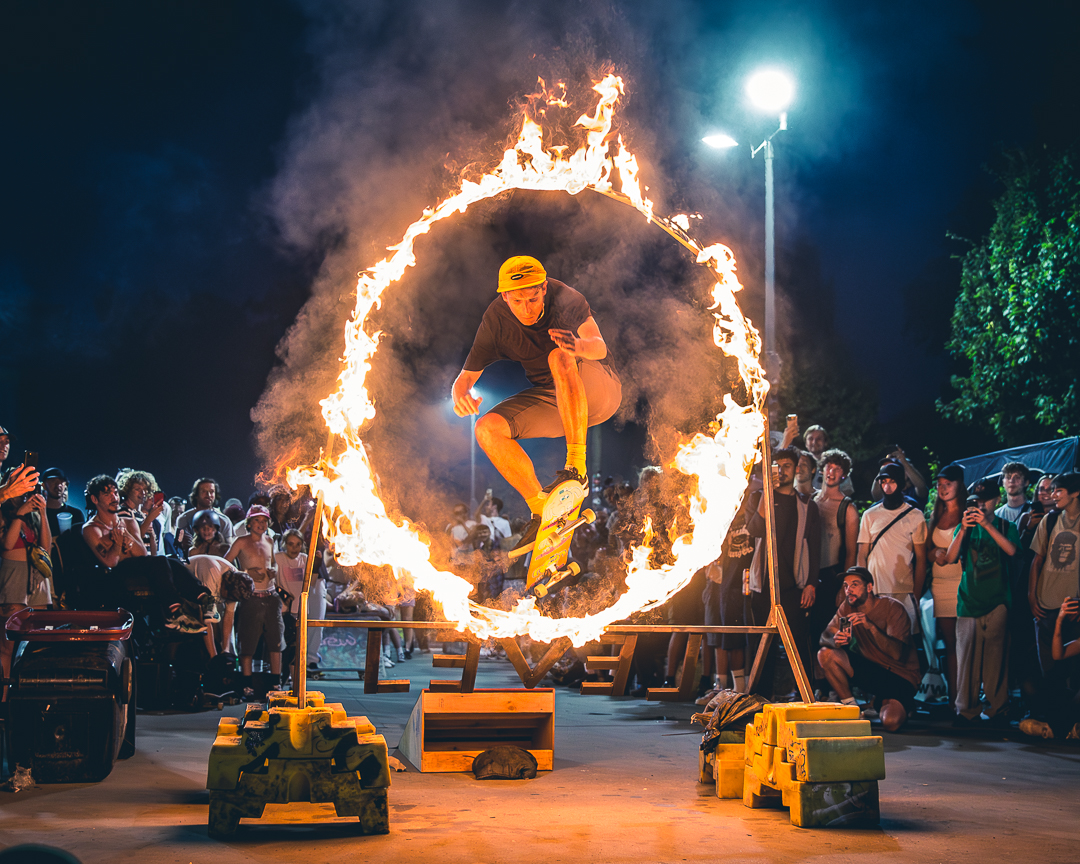The other day over lunch, Jack and I ended up chatting about a local skateboarder named Liam Teague. If you don’t know Liam, he’s an incredible skater who rides for Drawing Boards (a local brand definitely worth checking out).
Jack showed me some of Liam’s clips, and yes, his tricks are unreal. We’re talking about the kind of skating that makes your palms sweaty just watching, like throwing himself down the giant rail at Churchill Square. (Quick note: not something we’d recommend you or your kids try anytime soon!)
But there was something else that really stood out. It wasn’t just the tricks. It was the falls. Liam took some of the gnarliest slams you’ll ever see… and yet, somehow, he always got back up almost unscathed. He had mastered the art of falling.
Why Falling Is Part of Skating
Here’s the thing: if you skate, you’re going to fall. It’s not if, it’s when. It’s part of the game we play.
When I first got hooked on skateboarding, the falling didn’t put me off, much to my mum’s horror. And that’s the difference between people who stick with skating and those who quit. Once the bug bites, the falls aren’t the end of the session, they’re just part of it.
The good news? Like Liam, you can actually learn how to fall in ways that minimise injury and keep you rolling for longer.
Now, before we get into it, a quick disclaimer: we always recommend wearing pads and skating within your ability. But even then, there are moments where you (or your child) will have just a split second to react to what’s coming next. That reaction is what makes the difference.
Golden Rules for Falling Safely
Soft Knees
The golden rule: never land with locked legs. If your legs are straight and stiff, you’ve got no way to get off your board safely, and if it shoots out from under you, you’ll hit the ground hard.
Soft knees let you:
- Jump off the board quickly (your built-in “eject button”).
- Get low enough to sit down instead of crashing down on your hands.
Sure, you might dirty your trousers or rip your shirt, but that’s a small price to pay compared to a twisted ankle or sprained wrist.
The Eject Button
If you feel yourself leaning back, push the board forward and jump off to stay on your feet.
To practice, stand on your board, roll slowly, then jump off right before you would fall backward. Keep your feet under you. It’s much safer than slipping out and landing flat on your back.
This bail is especially useful for:
- Sudden obstacles, like someone stepping in your way
- Tricks that go wrong mid-landing
The Forward Runout
A classic. If you’re falling forward, jump off and run it out.
Pro tips:
- Jump far enough to clear your board.
- Run faster than you think, slow runouts often lead to tripping.
- Keep your weight forward so you don’t stumble backwards.
The Forward Shoulder Slide
If you can’t run it out, drop into a slide.
Steps:
- Bend your knees deeply.
- Push off your feet and roll onto your side.
- Spread your impact across your whole side body.
- Bend your knees deeply.
It might sting, but it hurts far less than catching yourself with your hands or going face-first.
The Knee Slide
When you’re wearing pads, sliding on your knees is one of the safest ways to take a fall. It helps you stay in control, protect your wrists, and avoid the instinct to put your hands down. Practice it on smooth ground so it becomes second nature.
Steps:
- Drop onto both knees with your weight slightly back
- Keep your hands up and away from the ground
- Let your pads take the impact and slide it out
- Stay relaxed and ride the slide until you slow down
- Pop back up once you’ve come to a stop
A Note for Parents
We know skateboarding can be scary to watch as a parent. But once your child has got the bug, there’s no stopping them. Falling is part of the sport, but learning how to fall, and learning it early, makes all the difference.
If your child’s ready to build confidence and learn skateboarding in a safe, structured way, we’d love to help.
Book a lesson here.

